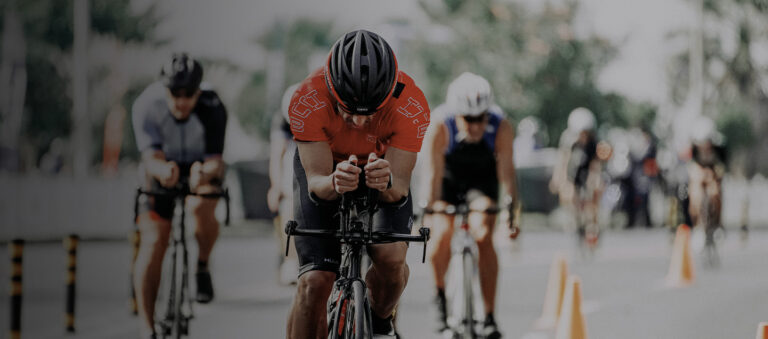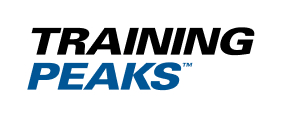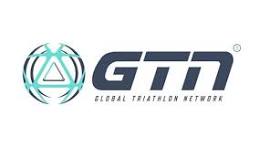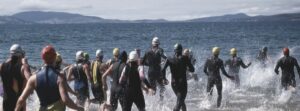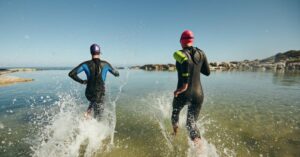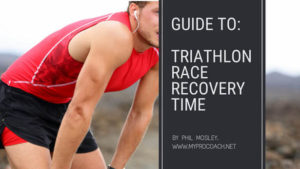Swim, bike and run stronger with this Half Distance (IRONMAN 70.3) triathlon pace guide…
A half distance triathlon, such as an IRONMAN 70.3 event, is the first step into the world of long-distance triathlon. And with its 1.2-mile swim, 56-mile bike and 13.1-mile half marathon run, it’s an event that might take you anything between four and eight hours.
So, let’s say for argument’s sake, a half distance triathlon takes you five or six hours. Well, that’s a LONG time to be swimming, cycling, and running, and you’ll need a pacing strategy that reflects that duration. If you get your pacing wrong and set off too fast, you’ll be hit with fatigue and sore legs in the second half of the race. And not only will that lead to slower times, but it’ll also make the whole experience feel very unpleasant.
Thankfully, the advice in this article will help you pace yourself properly, so that you feel strong throughout. Plus, there’s another benefit to accurate pacing, which is that you’ll find it easier to digest all the gels, bars and energy drinks that you’ll be consuming during the event. So not only will this pacing strategy help you to race faster, but it will also help you stay more energized along the way.
I’ll talk you through the swim, bike and run sections, and give my recommended pace targets at the end of each section. Right, let’s start with the swim…
Half Distance (such as IRONMAN 70.3) Triathlon Swim Pacing
Pacing yourself during the swim, is the most difficult part, because you can’t look at your watch to see how fast you’re going. Add to that, the first few minutes of a triathlon swim are a frenzy of closely packed swimmers all trying to make a fast start. If you’re anything like me, you’ll experience a surge of adrenaline, which makes it hard to maintain a sensible pace.
For those first few minutes, you should aim to swim at an intensity that feels like a 7/10, or perhaps 8/10 if you’re a sub-5 hour athlete. And remember to breathe out fully between each stroke, so that you don’t get yourself into a breathing panic.
After the first few minutes, the pace usually eases, and people find themselves more spread out. At that point, you can ease back slightly, so that you’re swimming at an intensity that feels like 6 out of 10, or perhaps 7 out of 10 if you’re a fast age grouper.
Transition 1:
Once you’ve finished the swim, it’s time to head into Transition 1, to grab your bike. It’s important not to raise your pace here, as you’ve still got a long day ahead of you. You often see people sprinting like Usain Bolt at this point, but just ignore them. This is a five or six-hour race, and you should not be out of breath. Simply jog into transition and save your legs for later. And remember to be smart and efficient in transition, so that you don’t waste time unnecessarily.
Half Distance (such as IRONMAN 70.3) Triathlon Bike Pacing
How you pace yourself on the bike, will make or break your race. Not only will it affect your bike split, but it’ll also determine how well you cope with the run section. You cannot afford to get this bit wrong.
The advantage of the bike section is that it’s easy to look at your bike computer and get feedback on your pace. And there are a few ways to gauge your intensity, which are speed, heart rate, power and Rate of Perceived Exertion or RPE.
Speed is the worst way to gauge your pace because it relies on too many outside variables, such as weather and gradient. Whereas power output is the best method, because your power meter will immediately reflect changes in effort, so you instantly know how hard you’re working. Heart rate is a useful measure too, but it’s slow at responding to changes in your power output, often taking a minute or more to truly reflect your intensity.
If you don’t have a power meter, you can use heart rate or RPE instead. RPE is simply a number between 1 and 10 that reflects how hard your effort level feels, with 10 being the hardest you can pedal and 1 being the easiest.
Whichever method you choose, you should aim for a consistent, smooth application of effort, with no spikes in effort. That can be tricky on hilly courses, particularly if you run out of easy gears. In which case, you might benefit from fitting a compact chainring and a rear cassette with a 30 or 32-tooth chainring. This should give you enough gears to maintain a nice steady power output at your normal cadence, on all but the hilliest routes.
Lastly, before I give you some bike pacing numbers, it is important not to base your pace strategy on the bike split that you would “ideally like to do”. Rather, base your pacing goals on what you’ve demonstrated consistently in recent training, on the same bike.
Half Distance Triathlon Bike Pace Guide
Power Output (Watts)
- Race target time: Sub 5 hours > Aim for 83 to 84% of FTP
- Race target time: 5 to 6 hours > Aim for 80 to 83% of FTP
- Race target time: 6 to 8 hours > Aim for 77 to 80% of FTP
FTP = Functional Threshold Power (your mean average power output for a 1-hour cycle time trial at your best effort).
Threshold Heart Rate (Beats Per Minute)
- Race target time: Sub 5 hours > Aim for 88 to 92% of THR
- Race target time: 5 to 6 hours > Aim for 84 to 88% of THR
- Race target time: 6 to 8 hours > Aim for 81 to 85% of THR
THR = Threshold Heart Rate (your mean average heart rate for a 1-hour cycle time trial at your best effort).
Rate of Perceived Exertion (RPE)
- Race target time: Sub 5 hours > Aim for 6 out of 10 effort
- Race target time: 5 to 6 hours > Aim for 5 out of 10 effort.
- Race target time: 6 to 8 hours > Aim for 4/5 out of 10 effort
RPE = An intensity scale between 1 and 10. Where 1 out of 10 feels like your easiest effort level, and 10/10 is your hardest.
Riding at the right intensity takes discipline and courage, especially when other people are overtaking you. But it really works. Get it right, and later, on the bike course, and then on the run, you’ll be passing those who passed you.
Transition 2:
After you’ve hopped off your bike, you should still jog slowly through the transition. Again, be smart, don’t waste time and save your legs for the run.
Half Distance (such as IRONMAN 70.3) Triathlon Run Pacing
If you paced the swim and bike sensibly, you’re in with a fighting chance of running to par. Either way, you’ll still be very tired by the time you hit T2.
After all, you’ll have been racing for 3 to 6 hours by now, so don’t expect to run like you would for a standalone half marathon. Realistically, you should be aiming for an intensity that’s similar to, or slower, than your full-marathon pace.
The best ways to measure your intensity are pace, heart rate and RPE. Pace is a great measure if you’re on flat terrain, without much wind. Whereas heart rate is useful if it’s hilly or windy. You might even find that RPE is the best way to measure your pace, because it encourages you to listen to your body.
Half Distance Triathlon Run Pace Guide
Threshold Heart Rate (Beats Per Minute)
- Race target time: Sub 5 hours > Aim for 90 to 92% of THR
- Race target time: 5 to 6 hours > Aim for 87 to 89% of THR
- Race target time: 6 to 8 hours > Aim for 85 to 87% of THR
THR = Threshold Heart Rate (your mean average heart rate for a 1-running race at your best effort).
Run Pace (min/km or min/mile)
- Race target time: Sub 5 hours > Aim for 90 to 91% of TRP
- Race target time: 5 to 6 hours > Aim for 87 to 89% of TRP
- Race target time: 6 to 8 hours > Aim for 86 to 87% of TRP
TRP = Threshold Run Pace (your mean average pace for a 1-hour running race at your best effort).
Rate of Perceived Exertion (RPE)
- Race target time: Sub 5 hours > Aim for 5 out of 10
- Race target time: 5 to 6 hours > Aim for 4 out of 10
- Race target time: 6 to 8 hours > Aim for 3.5 out of 10
RPE = An intensity scale between 1 and 10. Where 1 out of 10 feels like your easiest effort level, and 10/10 is your hardest.
Check our Triathlon Race Pace Calculator to help guide your run pacing strategy.
Using all three of the methods (RPE (feel), HR and pace) is best as none of them are entirely reliable in isolation. Many variables can affect them, such as wind direction, gradient and cardiac drift (an increase in heart rate due to heat stress). The downsides of starting too fast are far greater than the downsides of starting too slow.
